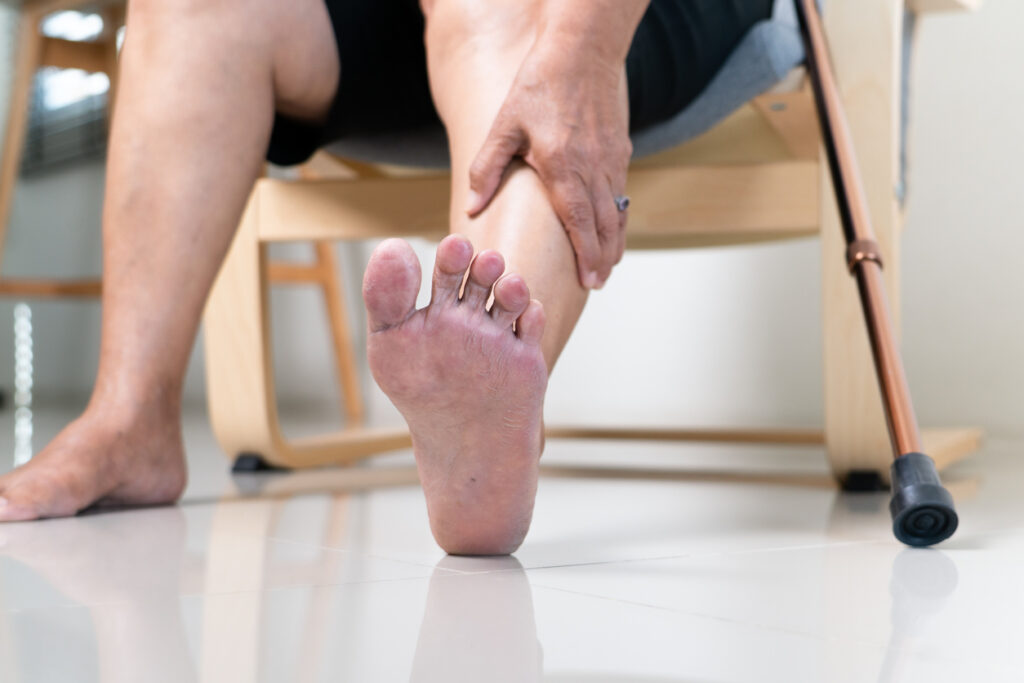Every 3 minutes and 30 seconds in the United States, a limb is amputated because of diabetes. More alarmingly, 85% of them are preventable.
Staggering statistics show Blacks experience amputations because of diabetes at four times the rate of White Americans. Overall, minorities had the highest diabetes incidence among racial groups from 2011 to 2016, according to a study using population-based survey data from the US National Health and Nutrition Examination Survey. Blacks, Latinos, and Asians have the highest diabetes prevalence, at 20.4%, 22.1%, and 19.1%, respectively.
While some of this prevalence is related to biological factors and diet, these disparities are also often linked to socioeconomic factors, such as income inequality, education gaps, and limited access to healthy food. These groups also tend to develop diabetes at a younger age, leading to a higher risk of complications, including amputations. Tyrone McCray, is one of the rare diabetes patients who avoided unnecessary amputation.
Some time after Tyrone was diagnosed with type 2 diabetes, he had diabetic foot complications that resulted in surgery. His podiatrist had been helping him manage his foot health issues. But in December 2019, he once again found himself dealing with another diabetic foot complication. His foot was swollen. He noticed a blister on his toe, followed by an ulcer on the sole of his foot. This diabetic foot ulcer would not heal, causing discomfort.
Tyrone went to the emergency room. This time he faced a more severe complication that threatened both his mobility and quality of life. He learned that a severe infection had caused the problem—and the solution from his care team wasn’t what he expected.
It shocked Tyrone when an unfamiliar surgeon told him he would have to amputate his leg from the knee down because the infection had spread too far. What he thought would be a manageable procedure turned into a life-changing event for him.
“I cried when they told me I was going to lose my leg,” Tyrone recalled.
He worried about his job, which required him to be on his feet. He hadn’t arranged for short- or long-term disability. Not only that, but he and his wife would need to rethink their timeframe for having children. Despite so much to consider, he felt unconsidered.
He was dismayed by the surgeon’s lack of empathy and pushiness about such a major life-altering procedure. At one point, the surgeon tried to convince Tyrone to have at least part of his foot amputated. Tyrone refused the operation. He recalled that he protested, “Absolutely not. Not today.” Tyrone’s confidence in the hospital surgeon’s care was challenged.
Podimetrics recently conducted a patient research report, surveying over 4,000 patients. The report found that 1 in 3 patients distrust the U.S. healthcare system. Tyrone’s experience is not uncommon.
Though he was disappointed, Tyrone realized he had to advocate for himself and his healthcare decisions. He preferred the established relationship he had with his podiatrist. “I had faith in my [podiatrist] to do the surgery, and I felt we had a good partnership going, and I trust him with my health,” he explained. In addition to Tyrone’s unwavering advocacy, his podiatrist’s guidance and commitment helped him recover from the ulcer that almost cost him his leg.
Now a father of twins, he also helps others who show signs of prediabetes or diabetic foot complications. He offers guidance and insights from his foot health journey. He encourages others to educate and advocate on their own behalf, so they can avoid developing diabetic foot ulcers–and or facing an amputation. “I can see how most Americans who don’t have a support system would have let that happen,” he said. “Luckily, I had a good support system and a strong will,” he explained.
He added, “I feel great. My diabetes is under control. I’m blessed, and I can walk.” Tyrone’s story of resilience and perseverance offers hope to others who are navigating diabetes and its associated challenges. It serves as a reminder that with self-care, education, and support and access to resources, it’s possible to take control of their health journey.
By putting patients’ needs first and guaranteeing access to excellent medical services, those responsible for providing, paying for, and regulating healthcare can work together to reduce health disparities and avoid unnecessary amputations.
This involves creating a comprehensive plan that includes identifying at-risk and vulnerable populations, providing access to appropriate healthcare resources, utilizing digital health tools to monitor and track progress, and implementing interventions to improve outcomes. Additionally, a commitment to long-term care and support for those living with complex diabetes is necessary in order to ensure successful outcomes. By working together, it’s possible to save lives and salvage limbs.



